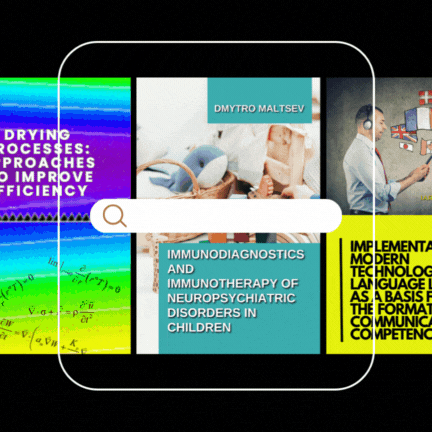Research of the shimmering failures predicting method based on the emissions theory
DOI:
https://doi.org/10.15587/1729-4061.2013.19769Keywords:
runs, intermittent failures, reliability, reliability predicting, theory of runsAbstract
Intermittent failures of REE (radio electronic equipment) are hard to predict, while they may lead to critical consequences. We propose the method, based on the theory of runs of random processes for predicting the parametric reliability of REE. This method allows predicting the duration of runs, their number and average duration of one run in the interval from 0 to T, on condition of the known three-dimensional random variable distribution law. The analytical and graphic dependencies for determining the parameters of the random process of change of REE defining parameter are given in the paper. The proposed method allows taking into account intermittent failures and predicting reliability for stationary and non-stationary processes. In addition, as a result of some simplifications, predicting is carried out with the known regression of expected value and variance, as well as the known random process distribution law.
The main advantage of the developed method is that it allows predicting the reliability of radio electronic equipment both in the case of the stationary process, and in the cases of the process with periodic component and quasideterministic random process.References
- Гудков, М. В. Методика прогнозування надійності радіоелектронного обладнання при експлуатації за станом з контролем параметрів / М. В. Гудков // Системи озброєння та військова техніка – 2010. - N4(24). – С. 32 – 35.
- Sumich D. An assessment of HF NVIS radio system reliability / D. Sumich, R. Vlasich // 4-th Intern. Conference on Rorts and Waterways - 2009. – P. 1 - 10.
- Nedostup L. Predicting the reliability of radio-electronic devises by the monitoring of production defectiveness // Electronic Review – 2012. - R88NR,3a, - P. 33-36.
- Rise, S. O. MathematicalAnalysesofRandomNoise / S. O. Rise // Bell. Syst. Thech. J. – 1944,1945 (23,24).
- Тихонов В. И. Выбросы случайных процессов/ В. И. Тихонов – М.: Наука, 1970. – 392 с.
- Тихонов В. И. Выбросы траекторий случайных процессов / В. И. Тихонов, В.И. Хименко - М.: Наука, 1987. – 306 с.
- Тихонов В. И. Статистическая радиотехника / В. И. Тихонов – М.: Радио и связь, 1982. – 624 с.
- Свешников А. А. Прикладные методы теории случайных функций / А. А. Свешников - М.: Наука, 1968. – 464 с.
- Свешников А. А. Основы теории ошибок / А. А. Свешников – Ленинград: Изд.Лен.унив., 1972. – 122 с.
- Волков Л. И. Надежность летательных аппаратов / Л. И. Волков, А. М. Шишкевич - М.: Высшая школа, 1975. - 296 с.
- Недоступ Л. А. Основи надійності радіоелектронних пристроїв / Л. А. Недоступ, М. Д. Кіселичник, Ю. Я. Бобало - Львів: ВДУ «ЛП» 1998. – 219 с.
- Gudkov, M. (2010) Process of forecasting reliability electronic equipment when operating as the control parametrivyu. Weapons systems and military equipment, N4 (24), 32-35.
- Sumich, D., Vlasich, R. (2009) An assessment of HF NVIS radio system reliability. POWA - 10.
- Nedostup, L., Kiselychnyk, M., Bobalo, Y., Melen, M. (2012) Predicting the reliability of radio-electronic devises by the monitoring of production defectiveness. Electronic Review,R88NR, 3a,33-36.
- Rise,S (1944,1945) Mathematical Analyses of Random Noise. Bell. Syst. Thech. J. (23,24).
- Tikhonov, V. (1970). Emissions of random processes. Moscow: Science, 392.
- Tikhonov, V. (1987) Emissions trajectories of random processes. Moscow: Sciens, 306.
- Tikhonov, V. (1982) Statistical radio engineering. Radio and communication, 624.
- Sveshnikov, A. (1968). Applied methods of the theory of random functions. Moscow: Science, 464.
- Sveshnikov, A. (1972) Fundamentals of the theory of errors - Leningrad: Len.univ ed., 122.
- Volkov, L., Shyshkevich, A. (1975) Reliability of flying apparats. Moscow: Higher School, 296.
- Nedostup, L., Kiselychnyk, M., Bobalo, Y. (1998). Fundamentals of reliability of electronic devices. Lviv: Publishing House of Lviv Polytechnic University, 219.
Downloads
Published
How to Cite
Issue
Section
License
Copyright (c) 2014 Леонід Аврамович Недоступ, Мирослав Дмитрович Кіселичник, Павло Михайлович Заярнюк

This work is licensed under a Creative Commons Attribution 4.0 International License.
The consolidation and conditions for the transfer of copyright (identification of authorship) is carried out in the License Agreement. In particular, the authors reserve the right to the authorship of their manuscript and transfer the first publication of this work to the journal under the terms of the Creative Commons CC BY license. At the same time, they have the right to conclude on their own additional agreements concerning the non-exclusive distribution of the work in the form in which it was published by this journal, but provided that the link to the first publication of the article in this journal is preserved.
A license agreement is a document in which the author warrants that he/she owns all copyright for the work (manuscript, article, etc.).
The authors, signing the License Agreement with TECHNOLOGY CENTER PC, have all rights to the further use of their work, provided that they link to our edition in which the work was published.
According to the terms of the License Agreement, the Publisher TECHNOLOGY CENTER PC does not take away your copyrights and receives permission from the authors to use and dissemination of the publication through the world's scientific resources (own electronic resources, scientometric databases, repositories, libraries, etc.).
In the absence of a signed License Agreement or in the absence of this agreement of identifiers allowing to identify the identity of the author, the editors have no right to work with the manuscript.
It is important to remember that there is another type of agreement between authors and publishers – when copyright is transferred from the authors to the publisher. In this case, the authors lose ownership of their work and may not use it in any way.









